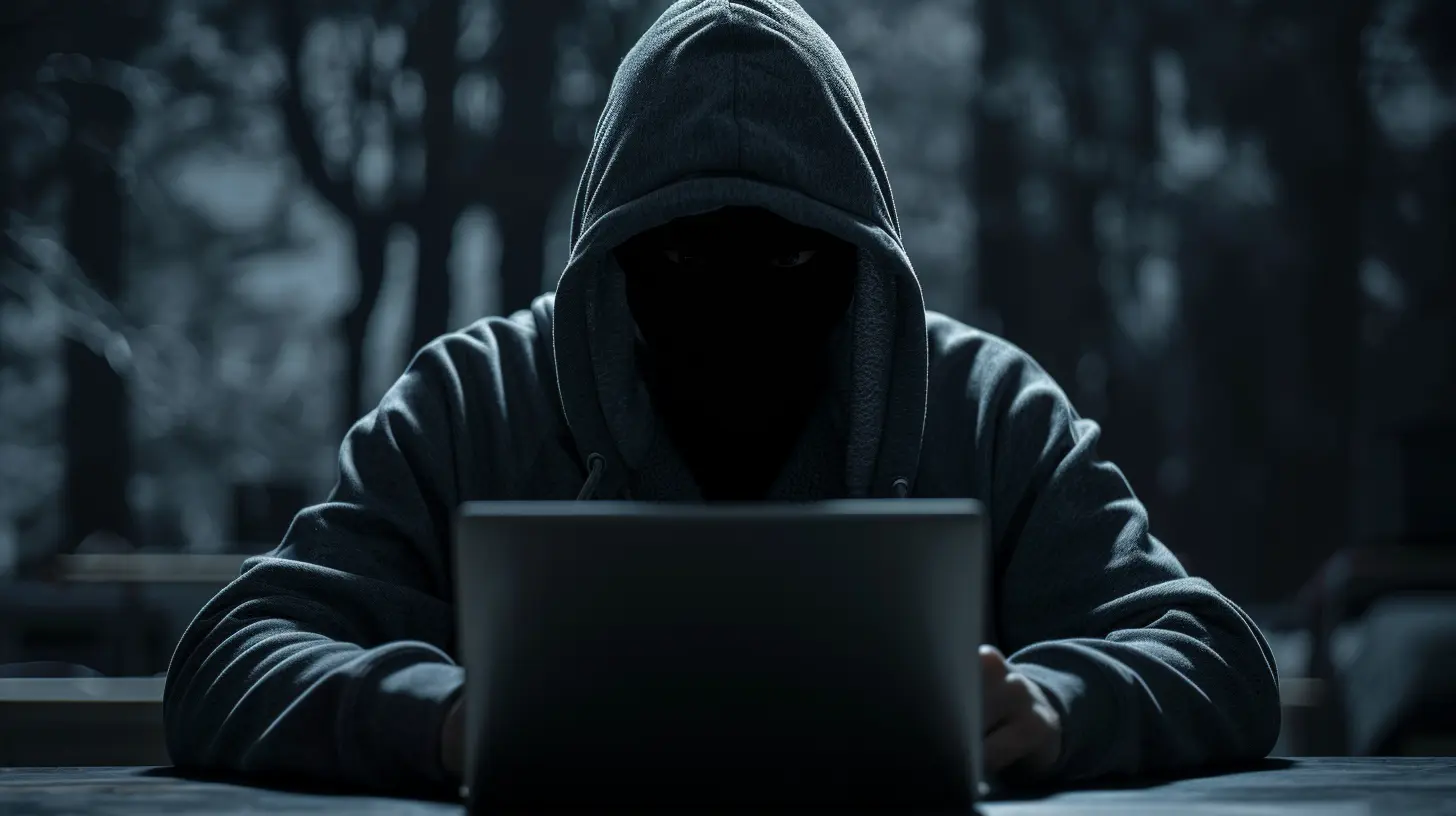Protecting Personal Data in a World of Constant Cyber Threats
28 May 2025
The digital world is a double-edged sword. On one side, we have instant access to information, seamless communication, and endless entertainment. On the other side, cybercriminals lurk in the shadows, waiting to steal our most valuable asset—personal data.
With cyber threats evolving at an alarming rate, protecting our information has never been more crucial. Hackers, scammers, and data thieves are getting smarter, and if we don't step up our game, we risk exposing everything from our social security numbers to our bank details.
So, how do we safeguard our personal data in a world where cyber threats are constantly knocking at our digital doors? Buckle up, because we’re about to break it all down in simple, no-nonsense terms. 
Why Personal Data is a Goldmine for Hackers
You might be wondering, Why would a hacker be interested in my personal data? Well, the answer is simple—your data is worth money.Cybercriminals can use your personal information in many ways:
- Identity Theft – Stealing your identity to take out loans, open credit cards, or commit fraud.
- Phishing Attacks – Using your email or phone number to trick you into revealing even more sensitive information.
- Financial Fraud – Accessing your banking details to transfer funds or make purchases.
- Doxxing – Publishing your personal information online to harass or blackmail you.
Your data isn’t just yours anymore—it’s a hot commodity on the dark web, where hackers sell and trade stolen information daily. 
Biggest Cybersecurity Threats Today
Before we talk about protection, let’s call out the biggest threats lurking in cyberspace right now.1. Phishing Attacks
Phishing is an old trick, but it remains one of the most effective. You receive an email that looks like it’s from your bank, a government agency, or even a friend. You click a link, enter your credentials, and boom—hackers have access to your accounts.2. Data Breaches
Major companies store your data, but even they aren’t always safe. Every year, millions of users' data get leaked due to corporate breaches. If your email or password is compromised in one of these breaches, hackers have a free pass to other accounts linked to the same credentials.3. Malware & Ransomware
Click on the wrong link or download the wrong file, and you might find your device infected with malware. Ransomware, in particular, locks up your files and demands payment to get them back.4. Public Wi-Fi Exploits
That free Wi-Fi at the coffee shop? It’s a hacker’s playground. Without proper encryption, criminals can intercept your data while you browse, stealing usernames, passwords, and even credit card information.5. Weak Passwords & Credential Stuffing
Still using "123456" or "password"? Bad idea. Hackers use automated tools to guess weak passwords, and if you reuse the same password across multiple accounts, one breach could lead to total compromise.
How to Protect Your Personal Data Like a Pro
Now that we’ve got the threats out in the open, let’s talk about solutions. Here’s how you can keep your personal data locked down tight:1. Use Strong, Unique Passwords
It sounds basic, but too many people still use weak passwords. A strong password should be:- At least 12-16 characters long.
- A mix of uppercase and lowercase letters, numbers, and symbols.
- Unique for every account.
Better yet, use a password manager to generate and store complex passwords for you.
2. Enable Two-Factor Authentication (2FA)
Even if a hacker gets your password, 2FA acts as an extra layer of security. Whether it’s a text message, authentication app, or biometric scan, always enable 2FA on important accounts like email, banking, and social media.3. Stay Away from Phishing Traps
Before clicking an email link or downloading an attachment, pause and verify:- Is the sender legitimate?
- Are there grammar mistakes or odd formatting?
- Is the URL slightly misspelled (e.g., "faceboook.com" instead of "facebook.com")?
If something feels off, don’t click.
4. Keep Your Software & Devices Updated
Software updates aren’t just for new features—they patch security vulnerabilities. That means updating:- Your operating system (Windows, macOS, iOS, Android).
- Your apps (especially browsers and messaging apps).
- Your antivirus and security software.
5. Secure Your Wi-Fi & Use VPNs
- Change your router’s default password.- Use strong encryption (WPA3 is the latest standard).
- If you’re on public Wi-Fi, use a VPN (Virtual Private Network) to encrypt your data and prevent snooping.
6. Limit What You Share Online
Hackers love oversharers. Posting your birthday, pet’s name, or mother’s maiden name? Congrats, you’ve just given cybercriminals easy password recovery hints.Think twice before sharing personal details, especially publicly.
7. Regularly Monitor Your Accounts
Cybersecurity isn’t “set it and forget it.” Check your bank statements, credit reports, and online accounts for any suspicious activity. The sooner you catch an issue, the less damage it can do.8. Use Encrypted Communication
For private conversations, rely on end-to-end encrypted messaging apps like Signal or WhatsApp. Avoid sharing sensitive details over SMS or unsecured email.9. Be Cautious with Smart Devices
Your smart speaker, fitness tracker, or even your fridge might be collecting data on you. Before connecting devices to your network, check their privacy settings and disable unnecessary data-sharing features.
What to Do If Your Data is Compromised
Even with the best practices, breaches can still happen. Here’s how to react fast:- Change your passwords immediately – If one account is hacked, assume others might be at risk.
- Enable multi-factor authentication (if you haven’t already).
- Monitor your financial statements – Look for unauthorized transactions.
- Freeze your credit – This prevents identity thieves from opening accounts in your name.
- Report incidents promptly – If your social media or email is hacked, report it to the platform. If your bank details are stolen, notify your bank right away.
Final Thoughts: Stay Vigilant, Stay Safe
Protecting personal data isn’t just a one-time task—it’s an ongoing commitment. Cybercriminals aren’t slowing down, and neither should you. By developing strong security habits, you can put up a digital fortress that keeps hackers at bay.It’s time to take control of your personal data. Because in this digital battlefield, only the smart and cautious come out unscathed.
all images in this post were generated using AI tools
Category:
CybersecurityAuthor:

Gabriel Sullivan
Discussion
rate this article
3 comments
Meagan Morgan
This article highlights the crucial need for robust cybersecurity measures. It’s a stark reminder that personal data protection is a continuous effort, not a one-time task. Staying informed and proactive is essential to mitigate evolving cyber threats.
June 15, 2025 at 11:30 AM

Gabriel Sullivan
Thank you for your insightful comment! You're absolutely right—ongoing vigilance and proactive measures are key to safeguarding personal data in today's ever-changing cyber landscape.
Zarev Mathews
This article effectively highlights the escalating risks to personal data amid growing cyber threats. While it emphasizes the importance of strong security measures, it could further explore the role of user education in fostering a proactive security culture. Ultimately, protecting personal data requires a multi-faceted approach that empowers individuals alongside technological solutions.
June 2, 2025 at 10:51 AM

Gabriel Sullivan
Thank you for your insightful comment! I completely agree that user education is crucial in fostering a proactive security culture and will consider incorporating it in future discussions.
Eleanor Lynch
Empowering ourselves with knowledge and proactive measures is key to safeguarding our personal data. Together, we can navigate the digital landscape with confidence and resilience against cyber threats. Stay informed and secure!
June 2, 2025 at 4:16 AM

Gabriel Sullivan
Thank you for your insightful comment! Empowerment through knowledge is indeed crucial in protecting our personal data. Together, we can build a more secure digital environment.

